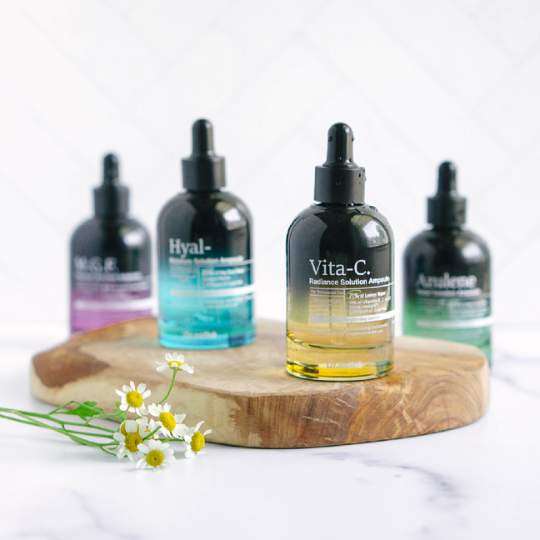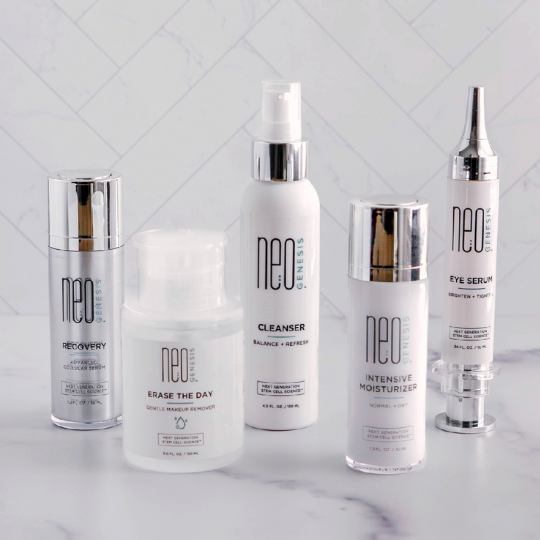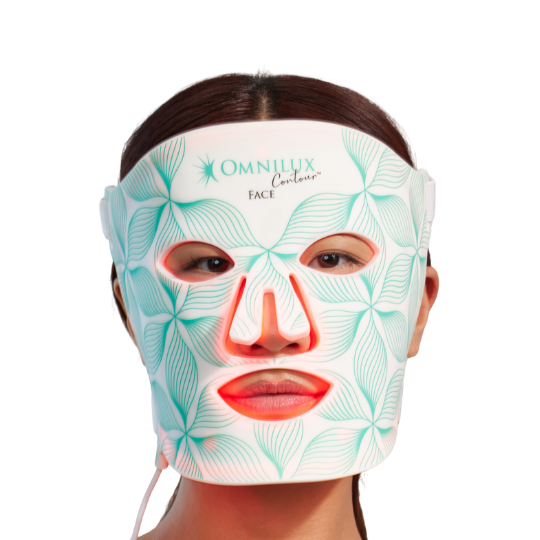- Age spots are the result of excess melanin production caused by repeated sun exposure.
- Sunspots are located in deeper layers of the skin that require a more targeted approach.
- Nanoneedling with brightening skincare products helps target age spots at the source.
- LED light therapy, especially red light therapy, helps reduce the appearance of sunspots.
Sunspots, liver spots, age spots… No matter what you call those pesky brown spots on your skin, chances are, you’ve found more scattered across your face, chest, and hands over the years. Age spots frequently develop on sun-exposed skin, becoming more noticeable in the summer months and increasingly common as we age. By age 60, as many as 90% of people with fair skin have sunspots!

However, it’s not just lighter-skinned individuals that develop age spots. Though less common on darker skin, age spots can still occur on medium to deep skin tones, appearing as brown or black flat patches of skin. Fortunately, there are several steps you can take to treat age spots, no matter your skin tone (or your age). Here’s my esthetician-approved, time-tested skincare routine for treating stubborn sunspots!
What Causes Those Annoying Age Spots?
There are several names for brown spots on the skin but, medically, they’re known as solar lentigines or lentigos. The word "solar" in the name should give a major clue as to how these dark spots form: sun exposure! Ultraviolet (UV) radiation from the sun causes genetic damage in the epidermis (the outermost layer of skin), which triggers melanogenesis, or the production of melanin.
Melanin is a natural skin pigment responsible for skin tone — the more melanin in the skin, the deeper the skin tone. Melanin is also the skin’s first line of defense against UV radiation. When areas of the skin are more frequently exposed to UV rays, such as the face and hands, the top layer will produce excess melanin. This process causes a freckle-like spot to form either by itself or in clusters.
Pro Tip: A “suntan” is just another word for sun damage! There is no safe way to suntan, but here are some tips for safely enjoying the summer sun.
Melanocytes, the cells that produce and contain melanin pigment, are often deeper in the skin. They’re found at the junction of the outer epidermis layer and the middle dermal layer, where dead skin cells meet living skin tissue. It’s difficult for most products to penetrate deep enough to target melanocytes, which is why age spots are so annoying to treat — regular skincare routines simply can’t reach them!
Brighten Skin More Effectively with Nanoneedling

As a licensed master esthetician for over two decades, I often get asked the same question about age spots: "How do I remove them?" The key is to invest in a skincare routine that actually penetrates through the epidermis to the true source of the pigmentation. That’s why my immediate recommendation is a nano infusion of brighteners with the Skin Wand Pro, which boosts the effectiveness of products like no other.
Nanoneedling (also referred to as microchanneling) uses a silicone microchip to create microscopic injuries in the dermis that allow skincare products to enter the live layer of skin, not just sit above the outer layer. The nano channels made by devices like the Skin Wand Pro are just 0.15 millimeters, so they’re incredibly tiny — but extremely effective at boosting the potency of skincare ingredients.
Pro Tip: Silicone microchips blend themselves out after about four to five full-face uses, so you must replace them to continue seeing results!

When it comes to treating age spots on the face, you want to pair nanoneedling with a brightening product, like the CBE Botanicals Brighten the Day Skin Brightening Serum. A combination of lightening ingredients, like licorice extract, vitamin C, and CoQ10, help reduce melanin formation. Apply a thin layer of the serum over the entire face, then glide the Skin Wand Pro over sunspots on the skin.
Pro Tip: Avoid pairing with a skin brightener that has a lot of acids in the formula, as you can over-exfoliate and dry out the skin. Read more here!
Follow Up with Red Light Therapy

Red light therapy is a form of LED facial treatment. For those who don't know, LED stands for Light-Emitting Diode, a component that converts electrical current into wavelengths of light. LED devices, particularly those that emit red LED light, have been shown to boost cellular energy and help skin cells grow and repair, working to reduce the appearance of age spots on the face.
Once you’ve completed a nano infusion of brighteners with a device like the Skin Wand Pro, I recommend following up with red light therapy to further treat sunspots. The hottest red light mask of the year is the Omnilux Contour, which can treat age spots on the face, neck, and hands. The Glow Younger TriLight LED Device is another dependable option and can be handheld for treatment across the chest.
Of course, no skincare routine is complete without a reliable sunscreen. If your skin is more sensitive or oily, I recommend the Dr. Esthé Sun Protection Mild SPF 50, a non-tinted, mineral sunscreen with Smart Sebum Control (SSC). If your skin is more dry or shows additional signs of aging, I recommend the richer Dr. Esthé Sun Protection Ultra Repair SPF 50.
Frequently Asked Questions
Can Sunspots Come Back After Treatment?
- Yes, sunspots can reappear, especially if your skin is exposed to UV rays without proper protection. To prevent recurrence, it’s crucial to apply broad-spectrum sunscreen daily and follow up with a consistent skincare routine that targets pigmentation.
Can Age Spots Turn into Skin Cancer?
- While age spots themselves are harmless, it’s important to monitor them for any changes in size, color, or shape, as these could be signs of skin cancer. Consulting a dermatologist is recommended for any suspicious spots.
How Long Does it Take to See Results Fom Nanoneedling and Red Light Therapy?
- Results vary, but with consistent use, some people may notice a reduction in the appearance of sunspots within a few weeks. However, deeper sunspots may require longer treatment periods and professional-grade products for noticeable improvement.
Spot the Difference with This Skincare Routine
Whatever you call them, it's true that age spots on the face, chest, and hands can seem to multiply as the years pass by. However, just because they’re common, doesn’t mean they need to be permanent. With a reliable skincare routine that includes pigmentation-fighting devices and brightening products, you can lighten the appearance of current sunspots and fight the development of new ones.
Plus, you don’t have to do it alone. Access personalized support for age spots, including the opportunity to win a FREE one-on-one consultation with me, when you sign up for the Christine Byer Beauty Club! I offer 14-day complimentary access to everything in the Club, from curated advice to exclusive savings. If you don’t find value in your membership, you can cancel within 14 days at no charge.
What are you waiting for? Let’s fight age spots together!














